If you're wondering how to convert kWh to amps, here's a simple formula:
Amps = (kWh × 1000) ÷ (V × H)
Let’s say you have a battery with a capacity of 10kWh that typically operates at 12V for 10 hours. In this case, the amps can be calculated as follows:
Amps = (10kWh × 1000) ÷ (12V × 10) = 83.3 amps.
kWh and amps are important electrical units, especially for those looking to choose a reliable portable power solution for their off-grid homes. While kWh (kilowatt-hour) is a unit of energy, amps measure the amount of current flowing through an electrical circuit.
If you're looking for a reliable charging solution that can charge most of your home appliances, even during power outages or outdoor adventures, the Jackery Portable Power Stations have your back.
For example, the Jackery Explorer 2000 Plus Portable Power Station can act as an emergency battery backup for homeowners. On the other hand, the Jackery Explorer 300 Plus Portable Power Station can be your companion during outdoor adventures, such as hiking, camping, road trips, etc.
What Is kWh to Amps?
Before understanding how to convert kWh to amps, you'll need to learn the meaning of different electrical units like watts, watt-hours, kilowatt-hours, amps, and amp-hours.
Watts measure power based on the rate of the electrical energy that is being dissipated, and watt-hours represent the number of watts discharged over one hour. Kilowatt-hours, often abbreviated as kWh, also measure electrical energy. One kilowatt-hour (kWh) is equal to one thousand watts of power consumed in one hour.
The flow of charge in a circuit or system is called current and is measured in amperes. The term ‘ampere-hour on battery’ determines the electrical charge and often represents the charge capacity of different batteries. One Ah is the amount of electricity charge that's transferred by 1 amp of current in 1 hour.
If you convert kWh to amps, you'll need to know the volts of the circuit. Here is the relationship between kWh and amps, along with an example.
Relation Between kWh and Amps
If you want to convert kWh to Amps, you can use the below formula:
Amps = (kWh × 1000) ÷ (V × H)
Where
kWh = Kilowatt-hour used
V = Voltage of the system
H = Number of hours
Let's say you have an electric device running on a standard 120V circuit for 5 hours. The kilowatt-hour, in this case, is nearly 6kWh.
Amps = (6kWh × 1000) ÷ (120V × 5H) = 10A
Line-to-Line Voltage: Also called line voltage, it is the voltage between any two given phases.
Line-to-Neutral Voltage: Also called phase voltage, it is the voltage between any given phase and neutral.
Jackery Explorer Portable Power Stations have higher watt-hour and ampere-hour ratings. For example, the Jackery Explorer 1000 Plus Portable Power Station has a LiFePO4 battery with a 1264Wh capacity. It has an ampere-hour rating of 30.4Ah and operates at 41.6V. It can charge 99% of low and high-power-consuming appliances for extended periods.
How to Convert kWh to Amps?
If you have the amps, kilowatt-hour, and the number of usage hours of a circuit, you can use the following formula to convert kWh to amps.

Suppose you have a battery with a capacity of 5kWh and operate at 41.6V for 5 hours. The amps can be calculated using the above-mentioned formula.
Amps = (kWh × 1000) ÷ (V × H) = (5kWh × 1000) ÷ (41.6V × 5H) = 24 amps.
How to Convert Amps to kWh?
The formula to convert amps to kWh is given below:
kWh = Amps × Volts × Hours of Use / 1000

Let's say you are running a 20 amps electric device on a standard 120V circuit for 4 hours.
Kilowatt-hour = 20A × 120V × 4H / 1000 = 9.6 kWh.
Amps to kWh calculation is helpful when sizing the power station or battery. Since energy usage is generally listed in Wh or kWh, calculating the battery's kilowatt hours will help determine how long the battery can power any device or appliance.
Amps to kWh Conversion Table
|
Current (Amps) |
12V Voltage |
24V Voltage |
120V Voltage |
220V Voltage |
|
1 Amp |
0.012 kWh |
0.024 kWh |
0.12 kWh |
0.22 kWh |
|
2 Amps |
0.024 kWh |
0.048 kWh |
0.24 kWh |
0.44 kWh |
|
3 Amps |
0.036 kWh |
0.072 kWh |
0.36 kWh |
0.66 kWh |
|
4 Amps |
0.048 kWh |
0.096 kWh |
0.48 kWh |
0.88 kWh |
|
5 Amps |
0.060 kWh |
0.120 kWh |
0.60 kWh |
1.10 kWh |
There are many reasons why you would want to convert amps to kilowatt-hours. It can be helpful when comparing batteries or power stations with the same voltage. As the energy usage is generally listed in Wh or kWh on the electricity bills, converting the amps to kWh also reveals how much one appliance contributes to the bill.
How to Convert kWh to Ah?
Converting kWh (electrical energy) to Ah (electrical charge) can be done using the below formula.
Ah = (kWh × 1000) ÷ V

That is, the electrical charge in amp-hours equals the energy in kilowatt-hours times 1000, divided by voltage.
Example: Let's convert 6kWh at 120V to Ah.
Ah = (6kWh × 1000) ÷ 120V = 50Ah.
Although both amps and amp-hours measure electrical charge, they are different. Ampere is the rate at which electrons pass through an electrical conductor. In contrast, amp-hours is the charge that moves through the source in one hour.
kWh to Ah conversion is of utmost importance when estimating the battery capacity. Electrical energy is usually measured in kWh, whereas battery capacity is rated in Ah. If you want to determine which battery capacity will meet your electricity needs, you'll need to convert kWh to Ah or mWh to Ah.
kWh to Ah Conversion Table
|
Kilowatt Hours |
Amp Hours @ 12V |
Amp Hours @ 24V |
|
1 kWh |
83.33 Ah |
41.67 Ah |
|
2 kWh |
166.67 Ah |
83.33 Ah |
|
3 kWh |
250 Ah |
125 Ah |
|
4 kWh |
333.33 Ah |
166.67 Ah |
|
5 kWh |
416.67 Ah |
208.33 Ah |
How to Convert Ah to kWh?
If you want to convert Ah to kWh, you'll need to multiply amp hours times volts divided by 1000.
kWh = (Ah × V) ÷ 1000

Suppose you want to calculate the kilowatt-hour of the battery. The first step is to locate its amp-hour and voltage, which are often printed on the battery. In this example, we suppose the battery has 100 amp hours and a voltage of 12V.
Kilowatt-hour = (100Ah × 12V) ÷ 1000 = 1.2kWh
Ah to kWh conversion is vital in comparing batteries of different voltages. For example, when we compare a 12V 100Ah battery and a 24V 60Ah, it's better to calculate kWh in each case.
For a 12V 100Ah battery, the kWh will be 1.2kWh. In contrast, for the 24V 60Ah battery, the kWh will be 1.44kWh. That means a 24V 60Ah battery stores more energy compared to 12V 100Ah.
Ah to kWh Conversion Table
|
Amp Hours |
Kilowatt Hours @ 12V |
Kilowatt Hours @ 24V |
|
100 Ah |
1.2 kWh |
2.4 kWh |
|
200 Ah |
2.4 kWh |
4.8 kWh |
|
300 Ah |
3.6 kWh |
7.2 kWh |
|
400 Ah |
4.8 kWh |
9.6 kWh |
|
500 Ah |
6 kWh |
12 kWh |
How to Convert Wh to Ah?
In simple words, a watt-hour (Wh) is the energy unit measuring the power capacity (in watts) moving over time (an hour). The number of watts that an appliance uses per hour is the battery life.
An ampere-hour measures the current (in amps) over a period (an hour). It tells you the number of amps a device draws when you are using it for one hour. One important thing to note is that amp-hour isn't a measurement of energy but rather a charge.
If you have the volts (or voltage) of the circuit, you can quickly convert Ah to Wh or vice versa.

Suppose you want to know how many amp-hours of current your electrical system can handle, assuming the watt-hours are 100Wh and the voltage is 10V.
Amp-hours = 100Wh ÷ 10V = 10Ah
The following watts to amp-hours conversion table at 12V and 24V.
|
Watt-Hours (Wh) |
Amp-Hours (Ah) at 12 V (Voltage) |
Amp-Hours (Ah) at 24 V (Voltage) |
|
100 Wh |
8.33 Ah |
4.17 Ah |
|
200 Wh |
16.67 Ah |
8.33 Ah |
|
300 Wh |
25 Ah |
12.5 Ah |
|
400 Wh |
33.33 Ah |
16.67 Ah |
|
500 Wh |
41.67 Ah |
20.83 Ah |
|
600 Wh |
50 Ah |
25 Ah |
|
700 Wh |
58.33 Ah |
29.17 Ah |
|
720 Wh |
60 Ah |
30 Ah |
|
800 Wh |
66.67 Ah |
30.33 Ah |
|
900 Wh |
75 Ah |
37.5 Ah |
When you need to measure an RV's electrical system requirements, you can convert watt-hours to amp-hours. This will help you decide which voltage you'll use, the thickness of wires, the solar system design, and even the battery sizes.
Similar to Wh to Ah conversion, you can convert Ah to Wh with the help of a simple formula.

Example: If you have a 12V battery for your camper and your appliance is rated for 200Ah, then you can multiply the amp-hours and the voltage to get watt-hours.
Watt-hours = 200Ah × 12V = 2400Wh
Here is an amp-hours to watt-hours conversion table where the voltage is 12V and 24V.
|
Amp Hours (Ah) |
Watt-Hours at 12 V (Voltage) |
Watt-Hours at 24 V (Voltage) |
|
1 Ah (1000 mAh) |
12 Wh |
24 Wh |
|
2.5 Ah |
30 Wh |
60 Wh |
|
5 Ah |
60 Wh |
120 Wh |
|
6 Ah |
72 Wh |
/ |
|
7.2 Ah |
86.4 Wh |
/ |
|
7.5 Ah |
90 Wh |
180 Wh |
|
10 Ah |
120 Wh |
240 Wh |
|
50 Ah |
600 Wh |
1200 Wh |
|
65 Ah |
780 Wh |
1560 Wh |
|
100 Ah |
1200 Wh |
2400 Wh |
How to Convert kW to Amps?
Kilowatts is the measure of power, whereas ampere is used to describe current. Since they measure two different units, kW cannot be directly converted to amps. You must know the voltage of the system to execute the conversion.
For any DC circuit, you can convert kW to amps or kW to volts using the below formula.
Amps = 1000 × kW / V
For any single-phase AC circuit, you'll need to keep the power factor in mind.
Amps = 1000 × kW / V × PF
Let's find the current of a 10kW motor with a power factor of 0.8 at 240V.
Amps = 1000 × 10kW / 240V × 0.8 = 52A
Here, the voltage is the RMS value of the applied AC voltage, and PF is the power factor of the load.
Motor Current Ratings (Single-Phase AC)
|
Power |
Current at 120V |
Current at 240V |
|
1 kW |
10.417 A |
5.208 A |
|
2 kW |
20.833 A |
10.417 A |
|
3 kW |
31.25 A |
15.625 A |
|
4 kW |
41.667 A |
20.833 A |
|
5 kW |
52.083 A |
26.042 A |
For any three-phase AC circuit, you can convert kW to amps if the line-to-line and line-to-neutral voltage are known.
Line-to-Line Voltage:
A = 1000 × kW ÷ (√3 × PF × V)
Line-to-Neutral Voltage:
A = 1000 × kW ÷ (3 × PF × V)
Let's calculate the current of a 30kW three-phase motor with a power factor of 1 and a line-to-line voltage of 240V.
A = 30kW × 1000 ÷ (√3 × 1PF × 240V) = 72 amps
If you want to calculate the amps of 3kW with a line-to-neutral voltage of 60V and 0.8 PF, here's how you can do it.
A = 3kW × 1000 ÷ (3 × 0.8PF × 60V) = 20.8 amps
Motor Current Ratings (Three-Phase AC at Line-to-Line Voltage)
|
Power |
Current at 120V |
Current at 208V |
Current at 240V |
Current at 277V |
Current at 480V |
|
1 kW |
6.014 A |
3.47 A |
3.007 A |
2.605 A |
1.504 A |
|
2 kW |
12.028 A |
6.939 A |
6.014 A |
5.211 A |
3.007 A |
|
3 kW |
18.042 A |
10.409 A |
9.021 A |
7.816 A |
4.511 A |
|
4 kW |
24.056 A |
13.879 A |
12.028 A |
10.421 A |
6.014 A |
|
5 kW |
30.07 A |
17.348 A |
15.035 A |
13.027 A |
7.518 A |
The main reason to convert kilowatts to amps is by adequately sizing and selecting electrical components.
How to Convert Amps to kW
The simple way to convert amps to kW is by using Watt's Law power formula, which states that I (Amps) = P (Watts) ÷ V (Volts).
The amps to kilowatts conversion formula in the DC circuit is:
Kilowatts = (Amps × Voltage) ÷ 1000
That means the power in kilowatts equals current in amps multiplied by voltage in volts divided by 1000.
Let's say you want to find kilowatts of a circuit with 24 amps of current at 120V.
P (in Kilowatts) = (24A × 120V) ÷ 1000 = 2.88kW
|
Current in Amps (A) |
Voltage in Volts (V) |
Kilowatts (kW) |
|
10 Amps |
200 Volts |
2 kW |
|
20 Amps |
210 Volts |
4.2 kW |
|
30 Amps |
220 Volts |
6.6 kW |
|
70 Amps |
230 Volts |
16.1 kW |
|
100 Amps |
240 Volts |
24 kW |
For any single-phase AC circuit, you'll need to consider the RMS voltage, current, and power factor.
P (kW) = (Amps × Volts × PF) ÷ 1000
The power factor in the single-phase AC circuit is determined by the AC frequency and the amount of inductive or capacitive circuit elements.
|
Current in Amps (A) |
Voltage in Volts (V) |
Power Factor |
Kilowatts (KW) |
|
40 Amps |
222 Volts |
0.11 |
0.976 KW |
|
43 Amps |
232 Volts |
0.12 |
1.197 KW |
|
46 Amps |
242 Volts |
0.13 |
1.447 KW |
|
49 Amps |
252 Volts |
0.14 |
1.728 KW |
|
52 Amps |
262 Volts |
0.15 |
2.043 KW |
For any three-phase AC circuit, there are two formulas to convert amps to kW.
Line-to-Line Voltage:
P (in kW) = [Amps × Voltage (Line-to-Line) × PF × √3] ÷ 1000
This equation is correct when considering one pair of wires in the three-phase system.
Line-to-Neutral Voltage:
P (in kW) = [Amps × Voltage (Line-to-Neutral) × PF × 3] ÷ 1000
kW & kWh Formula
The kW formula can be calculated as follows:
A = (kW × 1000) ÷ V
On the other hand, if you need kWh formula, here's it:
kWh = Power (in watts) × Time (in hours) divided by 1000
Jackery Portable Power Stations Explained
When looking for a portable power station, you'll need to look for its battery capacity. As a general rule of thumb, the bigger the battery capacity, the longer you can run your appliances. The standard metrics used to measure battery capacity include mAh, Ah, Wh, and kWh.
Jackery is a leading manufacturer of robust and portable solar panels, power stations, and solar generators. The battery-powered solar systems are designed to supply stable electricity to most of your home or outdoor appliances.
The Jackery Explorer Portable Power Stations are built with LiFePO4 or NMC batteries that can be recharged using Jackery SolarSaga Solar Panels. The PV panels absorb the sun's rays and convert them into DC electricity. The Jackery Explorer Portable Power Station features a pure sine wave inverter to convert the generated DC to AC electricity and then supplies steady power to appliances.
Jackery Explorer 2000 Plus Portable Power Station
Imagine massive storms rolling into towns and leaving the power lines damaged. This can often be accompanied with extended power outages or unexpected blackouts. In this case, you'll need a powerful and large capacity charging solution like Jackery Explorer 2000 Plus Portable Power Station. With the high watt-hour and amp-hour rating, the portable power station can keep 99% of your home appliances charged and functioning. It has double wheels, pull rods, and a foldable handle so you can move the home battery backup from one place to another.

Customer Review
“I purchased this to give my husband and I peace of mind during what has become more frequent power outages in our home. My husband uses an oxygen concentrator at night. The unit quickly charged up and testing has shown it will power the concentrator for 7.1 hours which will get him through the night in an emergency.” — Judy Browne.
Jackery Explorer 300 Plus Portable Power Station
If you're an outdoor enthusiast who often plans camping or hiking trips, then the Jackery Explorer 300 Plus Portable Power Station might be an ideal solution. It weighs only 8.27 lbs, has a foldable handle, and can easily fit into your backpack. The compact size and LiFePO4 battery helps you to easily charge small appliances like flashlights, coolers, phones, laptops, drones, portable fans, etc. When you have the portable power station in your backpack, you don't have to worry about traveling to remote locations with no nearby power outlets.

Customer Review
“First test, I ran my 37 QT 12V fridge/freezer on Eco mode for 7 hours. At the end of the test, Jackery was still at 28%. Very happy with the price and capability!” — Allen Wells.
kWh to Amps FAQs
How many amps are in a kilowatt?
You can calculate the amps in kilowatt using the kW to amps formula. According to the kW formula, the current (in amperes) is equal to the power (in kilowatts) multiplied by 1000 and divided by the voltage (in volts). Let's take an example to understand: suppose you've a circuit with power of 1kW operating at 120V, the amps would be (1kW × 1000) ÷ 120V = 8.33A. But if you want to amp-hour value, you'll need to use the kWh formula: kWh = Power (in watts) × Time (in hours) divided by 1000.
How to convert amp hour to amps?
An amp hour is equal to amps multiplied by hours. If you've an appliance that draws 20 amps in 1 hour, the amp-hour would be 20A * 1H = 20Ah.
How do you convert kWh per year to amps?
To convert kWh per year into amps, you can use the formula:
Amps = (kWh per year × 1000) ÷ (V × H)
For instance, if you are using an electrical appliance consuming 1000 kWh per year at 120V, then the current draw can be calculated as follows:
Amps = (kWh × 1000) ÷ (V × H) = (1000kWh × 1000) ÷ (120V × 365H) = 22.8A.
Here we assume that the electrical appliance is used for one hour daily.
How many amps hours is 3.6 kWh?
If you have 3.6kWh at 12V, you can convert kWh to Ah using the below formula.
Ah = kWh × 1000 ÷ V = 3.6kWh × 1000 ÷ 12V = 300Ah.
What is the difference between kWh and amp hour?
Kilowatt-hours measure electric power, whereas the ampere-hour represents the electric current. Even though these units measure different things, they are related by the following equation.
Power in Watts = Current in Amps × Voltage
If a battery is rated at 200 amp-hours, it can provide 10A for 20 hours. Multiplying the voltage by the ampere-hour value will help you get the watt-hours value.
In the above equation, the watt-hours will be 100Ah × 12V = 1200Wh. You can divide the result by 1000 to get the kWh value (i.e., 1.2kWh).
What are the relations of amps, watts, and volts?
Amps means the number of electrons flowing through a certain point at any time. Watts is the power or energy an electric appliance consumes. Volts measure the pressure required for an electric current to flow past a wire.
In mathematical terms, watts equals the multiplication of amps and volts.
Relationship between watts, amps, and volts: W = A × V
For instance, if the electric device consumes 10 amps at 12V, the wattage of the appliance will be 10A × 12V = 120W.
Final Thoughts
Kilowatt-hour and amp-hour are critical units for solar systems or electric appliances. There are multiple reasons why you might need to calculate kWh from amps or vice versa. For example, you might be looking to understand more about electricity, or you need a compatible solar generator by understanding how much kWh or Wh battery capacity a power station has.
Converting kWh to amps or vice versa will help you learn the current flow in the circuit or select which power station can supply seamless electricity to your appliances for a long time. Jackery Explorer Portable Power Stations are designed with high Wh and Ah ratings to provide electricity to small and large appliances for a long time.

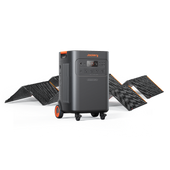


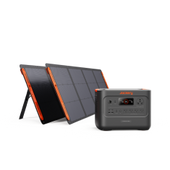







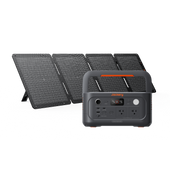





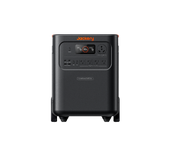
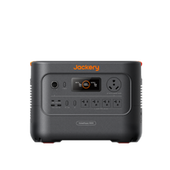




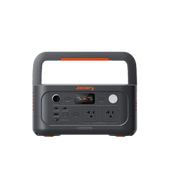





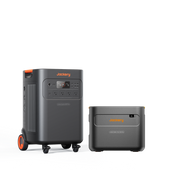
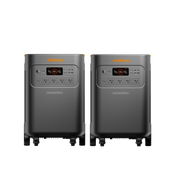
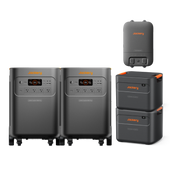





![[Add - on] Jackery Manual Transfer Switch for Explorer 5000 Plus - Jackery](http://www.jackery.com/cdn/shop/files/add-on-jackery-manual-transfer-switch-for-explorer-5000-plus-9017324.png?v=1754016782&width=170)

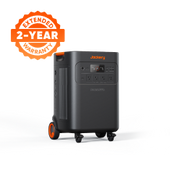

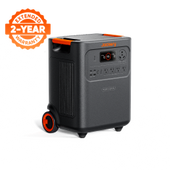






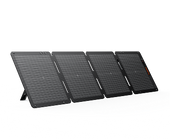
























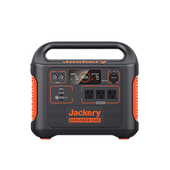







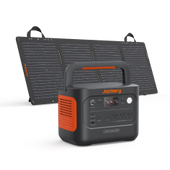
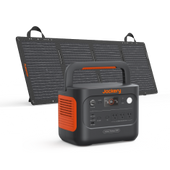




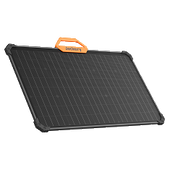



































![How to Convert kWh to Amps [Ultimate Guide]](http://www.jackery.com/cdn/shop/articles/how-to-convert-kwh-to-amps-ultimate-guide-8016988.jpg?v=1754017460)






Leave a comment